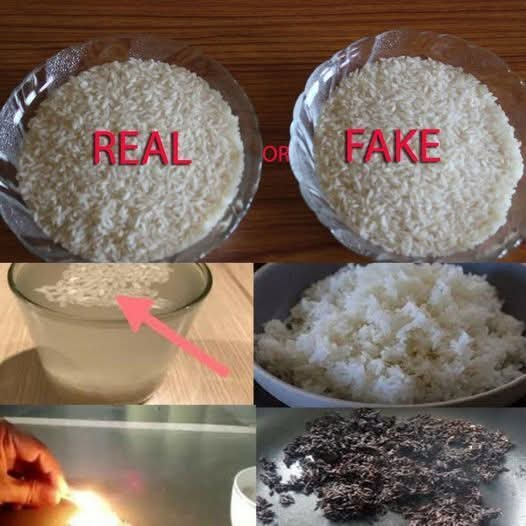In today’s world, food fraud is sadly a real issue – and plastic rice has made headlines multiple times in various countries. Although it’s rare and often part of rumors or isolated
incidents, knowing how to detect fake or adulterated rice can give you peace of mind, especially when sourcing from unknown suppliers or buying in bulk.
Here’s an up-to-date, 2025 guide with 6 simple and practical tests you can do at home to identify plastic rice.
What Is Plastic Rice?
Plastic rice refers to synthetic grains made to look like real rice, often using industrial polymers like PVC or plastic resin.
These fakes are sometimes mixed with real rice to cut costs – but they’re dangerous for human consumption and can cause serious health issues like digestion problems, hormonal disruption, or even toxicity with long-term exposure.
6 Steps to Identify Plastic Rice at Home
1. The Water Test (Float Test)
What to do:
Take a tablespoon of dry rice and drop it into a glass of water. Stir it well.
What to look for:
Real rice will sink to the bottom, while plastic rice will float due to its lighter weight.
⚠️ Note: Some real low-quality rice can also float due to trapped air. Use this test alongside others.
2. The Fire Test
What to do:
Take a small amount of dry rice in a metal spoon and hold it over an open flame (like a lighter or gas burner).
What to look for:
If the rice melts, smells like burning plastic, or forms black soot, it is very likely synthetic.
Caution: Perform this test in a well-ventilated area or outdoors.
3. The Hot Oil Test
What to do:
Heat a small amount of cooking oil in a pan. Drop a few grains of rice into the hot oil.
What to look for:
Plastic rice may melt or stick together, forming a lump or floating on the surface. Real rice will puff slightly or stay at the bottom.
Useful to test batches from new sources.
4. The Mold Test (Boiled Rice Check)
What to do:
Boil a handful of rice and store it in an airtight container at room temperature for 3 days.
What to look for:
Real rice will begin to ferment and grow mold after a few days.
Plastic rice may remain unchanged, as synthetic material does not decompose.
5. The Texture Test (Feel Test)
What to do:
Take a handful of uncooked rice grains and press them firmly between your fingers or bite into them gently.
What to look for:
Real rice is hard and breaks with a snap, while plastic rice might feel slightly rubbery, too smooth, or resilient under pressure.
6. The Boiling Water Test
What to do:
Boil rice as usual in water without any oil or salt.
What to look for:
Plastic rice may form a thick layer of residue on top, release a chemical smell, or result in strangely glossy or sticky grains.
🍚 Boiled plastic rice will not taste or behave like natural rice when cooked.
Bonus Tips for 2025: How to Avoid Buying Fake Rice
Buy branded and certified rice from trusted sources
Look for batch numbers and manufacturing details
Avoid suspiciously cheap deals or unlabeled bulk sacks
If you’re buying in local markets, ask for samples to test
Store rice properly – in airtight containers away from heat or moisture
⚠️ Health Risks of Plastic Rice
Digestive issues
Hormonal imbalance
Liver/kidney strain
Long-term toxicity and cancer risk
Your health is worth taking a few extra minutes to check the food you eat.
🧠 Final Thoughts
While plastic rice is not a widespread issue, it’s wise to stay informed. These 6 easy home tests can help you detect anything unusual before it ends up on your plate.
One small check can prevent big health problems.
Stay safe. Stay smart. Eat real.
